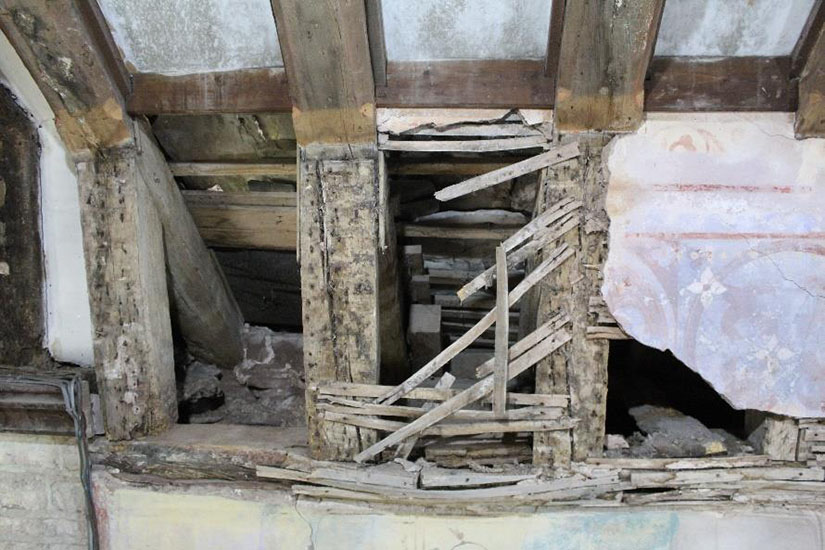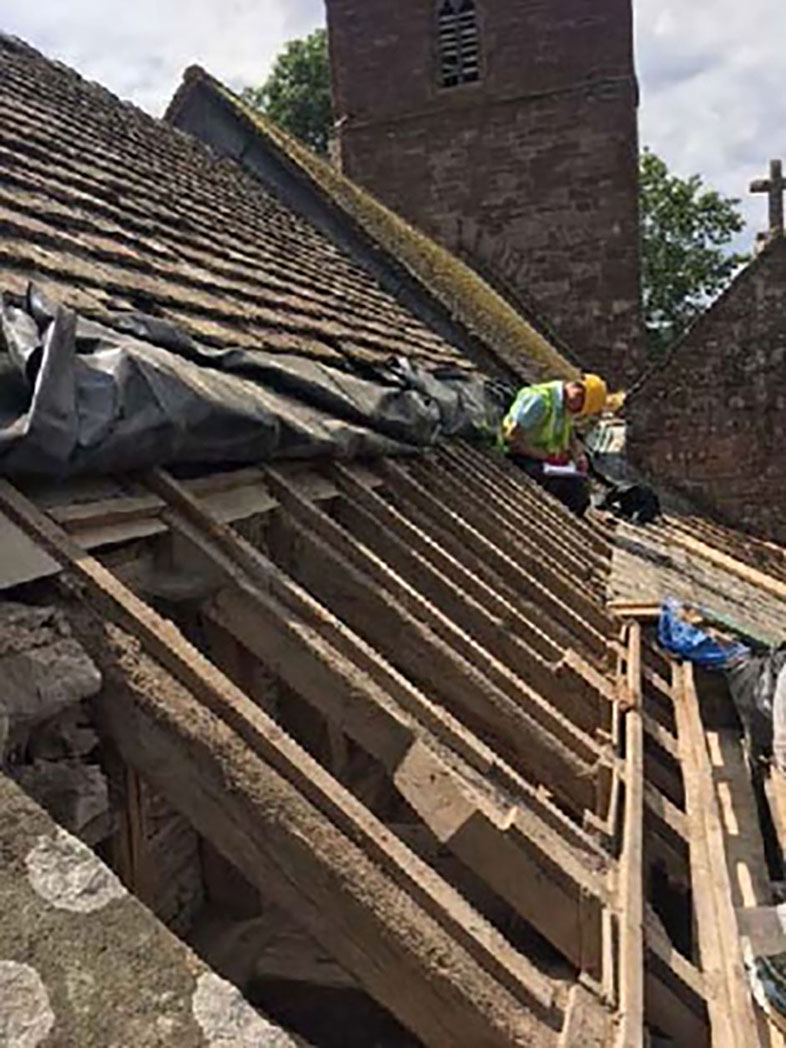In summer 2019 the conservators, Sally Strachey recorded progress on the project at the time.
The decision had been taken to work on the backs of the panels rather than through the front, as the work needed to secure the plaster would be too invasive from the front and would disrupt the decoration. The section of stone tiles was removed along the south elevation to also inspect the condition of the structural timbers to which the plaster is secured as well as the condition of the back of the plaster.
Once the stone roofing tiles were removed and all the debris from the nesting birds, mice and rats that had built up against the plaster panels cleared away, the wooden laths holding up the plaster could be inspected. The laths on a whole were in good condition, but some had been ravaged by wood worm and or dry rot. These laths were then carefully cut out and removed from the face of the plaster. Stainless steel wire was then fixed in place either end with screws and washers on the upright trusses. The wire was stretched against the length of the plaster panel where the lath was. This length of wire was bonded onto the back of the plaster panel with plaster of Paris. As the nibs and the remaining hardwood lath were in good condition, only the removed lath sections were treated with plaster-of-Paris to reduce adding weight to the overall section. Once the plaster-of-Paris had hardened the screws and washers were checked and tightened if necessary.
| The north elevation after removal of the unstable sections to safe storage within the work area |  |
| The south elevation showing the tiles removed for inspection of the structural timbers. The debris from behind the plaster is in the process of being removed |  |
| Pat Ruddock of Mann Williams inspecting the structural condition of the timbers on the north elevation |  |
| The south elevation showing the rear of the decorative plaster after the debris has been removed |  |